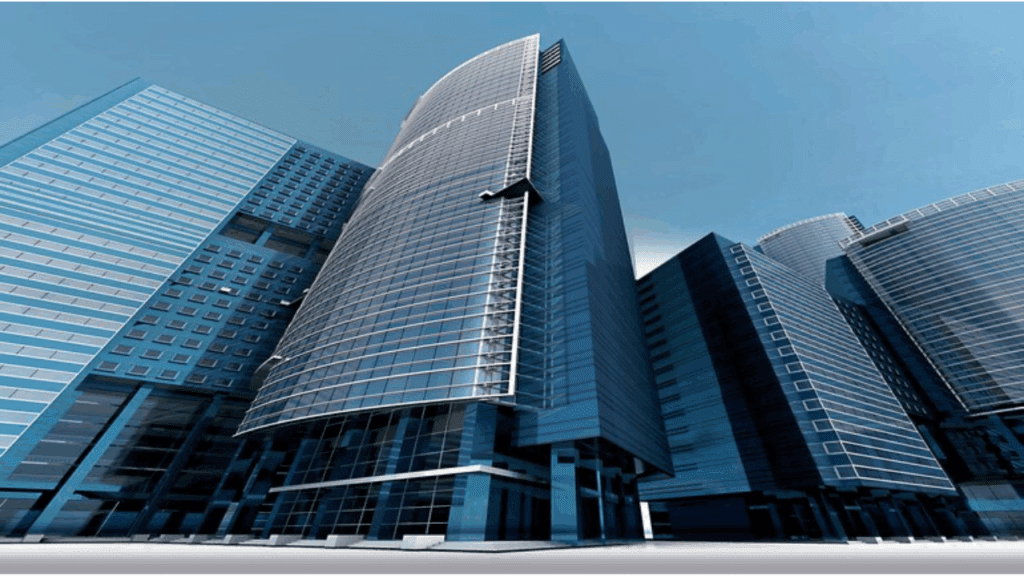The National Capital Region (NCR) has always been one of India’s most dynamic real estate markets, especially when it comes to commercial spaces. But in the past year, something unusual has happened—office rents across NCR have surged sharply, surprising many businesses, investors, and even analysts. Areas like Gurgaon’s Cyberhub, Noida’s Sector 62 and 144, and parts of Delhi such as Connaught Place and Saket are witnessing rent hikes that haven’t been seen in nearly a decade.
So what exactly is behind this upward push? Why are office rentals rising even when many companies still follow hybrid work models? And what does this mean for employers and investors? Let’s break it down.

1. Demand Bounce-Back After Hybrid Slowdown
For almost two years, hybrid work slowed down the demand for office spaces. Companies were cautious about signing long-term leases, and some even downsized. But since late 2023 and more aggressively through 2024–2025, organizations have begun calling employees back to the office in larger numbers.
Here’s why demand bounced back:
- Reduced productivity concerns during remote work
- Need for better collaboration for fast-scaling teams
- Integration of new recruits requiring in-office onboarding
- Companies revamping work culture post-pandemic
As a result, major corporate hubs in Gurgaon, Noida, and Delhi saw a sudden jump in demand—enough to push rents upward.
2. Supply Crunch in Premium Office Spaces
Interestingly, while demand has risen, supply hasn’t kept up. Most Grade A offices in NCR are already occupied, leaving very few high-quality options available. Even new construction projects got delayed due to:
- Regulatory bottlenecks
- Increased construction costs
- Environmental clearances
- Funding challenges for developers
- Since premium spaces are limited, companies willing to pay more end up driving overall rental values higher.
Gurgaon’s commercial micro-markets like DLF Cyber City, Golf Course Road, and Udyog Vihar have almost no vacant Grade A inventory left—creating intense competition among tenants.
3. Global Firms Expanding Their India Footprint
A major catalyst behind rising rents is the increasing presence of multinational corporations (MNCs) in NCR. Foreign companies expanding engineering, R&D, IT, finance, and tech operations prefer NCR because of:
- Access to a skilled talent pool
- Strong infrastructure and connectivity
- Established business districts
- Proximity to the political capital
These firms also typically prefer high-end office spaces and have larger budgets, which pushes overall rental benchmarks higher. In 2025, US and European firms in tech, fintech, and consulting contributed heavily to NCR office absorption.
4. Growth of Co-working and Managed Office Spaces
The boom in co-working spaces like WeWork, Awfis, Smartworks, and others has significantly impacted NCR’s commercial real estate dynamics. Instead of taking long-term leases, many growing startups and mid-sized firms prefer turnkey offices with flexible terms.
- This shift has led to:
- Higher competition for premium floors
- Faster leasing cycles
- Operators taking up large blocks of space at once
Co-working operators often pre-lease large commercial inventory, shrink vacancy rates, and raise rent expectations—especially in hot markets like Gurgaon and Noida.
5. Infrastructure Development Fueling Property Appreciation
Infrastructure projects across NCR have acted as a major catalyst for rising commercial rental values. Some key developments include:
- Delhi-Mumbai Expressway
- Rapid Metro in Gurgaon
- Noida-Greater Noida connectivity improvements
- Jewar Airport progress boosting Noida and Greater Noida West
- Expansion of Delhi Metro Phase IV
- New flyovers and arterial road upgrades
Infrastructure boosts accessibility, which in turn increases the desirability of commercial markets—naturally pushing rents higher.
6. Low Vacancy Rates in Prime Business Districts
One of the strongest indicators of rising rents is falling vacancy rates. In core NCR markets:
- Cyberhub, Gurgaon: Vacancies under 5%
- Noida Expressway: Vacancy falling below 10% for the first time in 5 years
- Connaught Place: Extremely limited supply
- When vacancies fall, landlords gain bargaining power. This leads to
- Higher base rent
- Reduced rent-free periods
- More stringent security deposits
- Lower chances of negotiation for tenants
- These factors collectively raise commercial rental standards.
7. Rising Construction Costs Pushing Up Rentals
Construction expenses have risen significantly due to:
- Increased raw material prices
- Higher labor costs
- Expensive land acquisition
- Elevated interest rates on developer loans
Developers pass these increased costs to tenants through higher rentals. For premium and Grade A commercial buildings, this cost push is even more visible.
8. Investors Returning to Commercial Real Estate as a Safer Bet
With the stock market showing periods of volatility, many wealth managers and large investors have shifted focus toward income-generating assets, especially commercial real estate.
- Why commercial spaces?
- Provides stable rental income
- Higher yields compared to residential property
- Long-term corporate tenants
- Less risk of tenant turnover
As more investors buy commercial floors and entire office blocks, rental benchmarks rise further due to premium-building pricing.
Conclusion
The rise in NCR office rents isn’t driven by a single factor—it’s a combined result of demand recovery, supply constraints, global corporate expansion, rising construction costs, and the booming co-working ecosystem. For companies, this means planning office expansion more strategically. For investors, it signals a promising opportunity in the commercial sector. And for the real estate market overall, rising rents indicate strong economic momentum and a renewed confidence in physical workplaces after years of uncertainty.
NCR’s commercial real estate market is clearly entering a new growth cycle—one that seems likely to continue as businesses expand, infrastructure evolves, and India strengthens its position as a global corporate hub.
Read Also: Tenneco Clean Air Share Price LIVE: Shares Make Strong Debut, List at 27% Premium







Leave a Comment